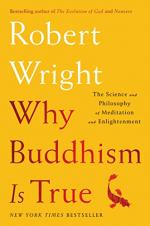
|
| Name: _________________________ | Period: ___________________ |
This quiz consists of 5 multiple choice and 5 short answer questions through Chapters 7-9.
Multiple Choice Questions
1. Who is the author of the book called What the Buddah Taught?
(a) Ajahn Chah.
(b) Hadley Cantril.
(c) Walpola Rahula.
(d) Judson Brewer.
2. The author states that "coherence of motivation, though a desirable quality in a friend or collaborator, isn't by itself" (82) what?
(a) Decisive.
(b) True.
(c) Effective.
(d) Satisfying.
3. When the author describes the colors of his hallucination during meditation, what colors does he name?
(a) Blue and white.
(b) Red and yellow.
(c) Orange and purple.
(d) Purple and green.
4. The Buddah stated that what element is impermanent?
(a) Life.
(b) Englightenment.
(c) Feeling.
(d) Self.
5. What is the English translation of the word anatta?
(a) Peace.
(b) Suffering.
(c) Tranquility.
(d) Not-self.
Short Answer Questions
1. With what system is the dorsolateral prefrontal cortex associated?
2. When ancient Buddhist writings mention the term sati, what does the word mean in English?
3. Which character in the movie referred to in the chapter entitled "Take the Red Pill" realizes that his life has actually been an extended hallucination?
4. What animals are involved in the pellet experiment described by the author?
5. What is NOT one of the five aggregates named by The Buddha when he first split the self into five aggregates?
|
This section contains 211 words (approx. 1 page at 300 words per page) |

|




